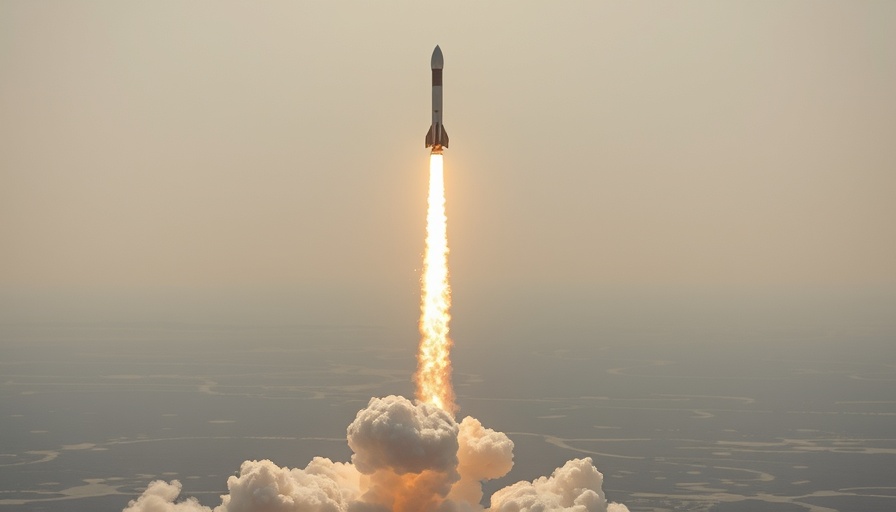
SpaceX's Ninth Starship Test: A Rollercoaster Journey
On May 27, 2025, SpaceX launched its ninth test flight of the ambitious Starship rocket, marking a significant step in the company’s journey toward interstellar travel. The flight managed to successfully separate from its Super Heavy booster, a feat that underscores the advances achieved since earlier tests. However, this mission was a mixed bag of triumphs and challenges, highlighting the complex nature of space exploration.
Successes and Setbacks: The Dual Nature of the Flight
Despite the flight's eventual uncontrolled re-entry into the Indian Ocean, it was touted as the smoothest launch of the year for SpaceX. The use of a flight-proven Super Heavy booster symbolizes a move toward reliability in this innovative technology, following two consecutive explosion incidents during prior missions. But, as the flight progressed, Starship faced significant challenges, most notably the inability to open its cargo hatch to deploy mock satellites, which was part of a planned test.
This mission followed a less than robust testing history, including a January flight that ended with debris raining down near Puerto Rico. The lessons learned have driven SpaceX to make necessary adjustments, such as modifying hardware to improve reliability and enhance safety protocols. The Federal Aviation Administration (FAA) has monitored these developments closely, broadening hazard zones during flights as safety measures continue to evolve.
The Bigger Picture: Satellite Deployment and Future Missions
Starship's design aims not only to foster future manned missions to Mars but also to facilitate satellite deployment. The failure to deploy the mock satellites during this test indicates significant room for improvement as the next phase of development looms nearer. In a time when various tech news sources highlight advances in satellite communications and global connectivity, the emphasis on deploying such technology from the Starship is not to be underestimated.
How Does This Impact the Tech Landscape?
The implications of SpaceX’s ongoing tests extend beyond the realm of space exploration. They spotlight how advancements in aerospace technology can drive innovation in multiple sectors, including telecommunications, defense, and even transportation here on Earth. As SpaceX continues to refine its spacecraft, the insights gained could regularize the deployment of next-generation satellites globally, propelling advances in internet services and data transmission.
What Lies Ahead for SpaceX and the Industry?
Future predictions suggested by experts emphasize that safely navigating these test flights will be crucial for SpaceX. Achieving stable flight capabilities and reliable satellite deployments will be up for discussion in future engagements, including at the next tech events focusing on aerospace innovations. With continuous monitoring and updates by agencies like the FAA, space travel is on the cusp of becoming more accessible and commercialized.
The Human Element in Tech Development
For those interested in the intersection of technological advancement and human endeavor, SpaceX’s test flights evoke a sense of adventure intertwined with risk. The ambitious goals set by Elon Musk, such as the desire to colonize Mars, reflect highly human qualities: ambition, persistence, and creativity. As these missions unfold, they invite public fascination while showcasing the reality of setbacks and challenges faced in this high-stakes environment.
In conclusion, while challenges remain, the tranquility of SpaceX’s most recent achievements cannot be overlooked. Each test yields valuable insights and gradually shapes the landscape of space travel, technology, and international communications. As the world watches, it’s clear: SpaceX is laying the groundwork for a bold and interconnected future.
 Add Row
Add Row  Add
Add 



Write A Comment